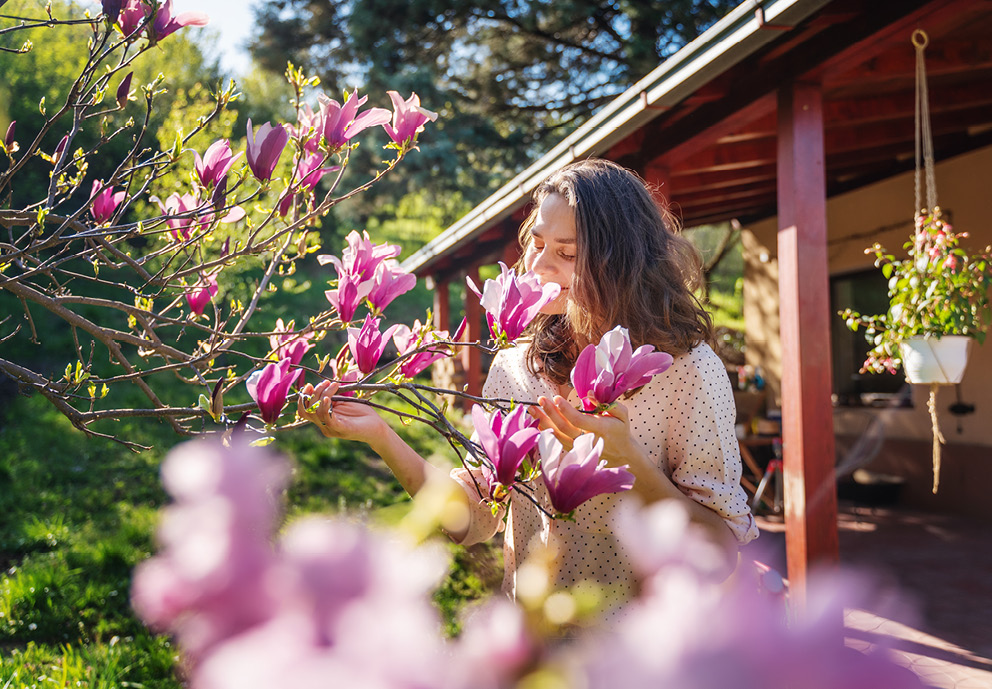Growing and Caring for Magnolias
December 11th, 2023 | Categories
If you’re looking to add a touch of elegance and beauty to your garden, look no further than the magnificent magnolia. Magnolias are one of the loveliest early flowering shrubs, doing so in late winter to early spring, before their leaves even appear. This makes them a welcome addition to any garden providing an instant early pop of colour when not much else is going on. They look exotic in the garden too with their large, showy flowers and sweet fragrance. If you want something hardy, that doesn’t need too much attention, yet is eye-catching then these shrubs are guaranteed to make a statement.
In this guide, we’ll take a closer look at these stunning shrubs and provide all the information you need to successfully grow them in your garden.
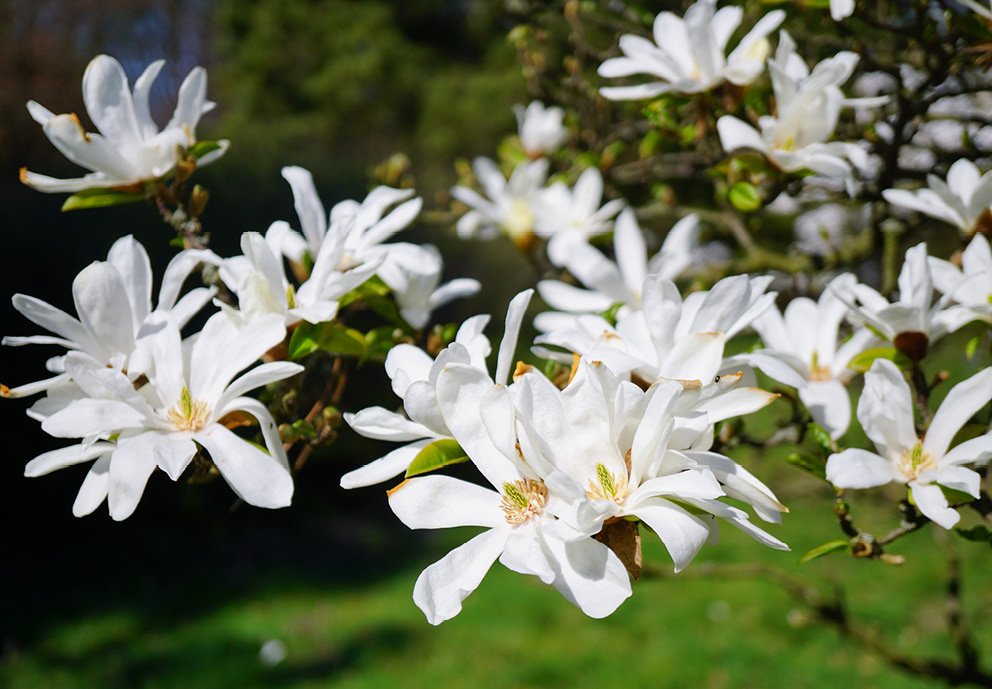
Magnolia Factsheet
- Plant type: Mostly deciduous, a minority are evergreen
- Flower colours: Pinks, purples, reds, yellows, white
- Flowers: Late winter to summer
- Prune: After blooming mid-summer to autumn
- Sun exposure: Full sun, part sun
- Hardiness: Hardy
- Soil type: Well drained, organically rich, acidic soil
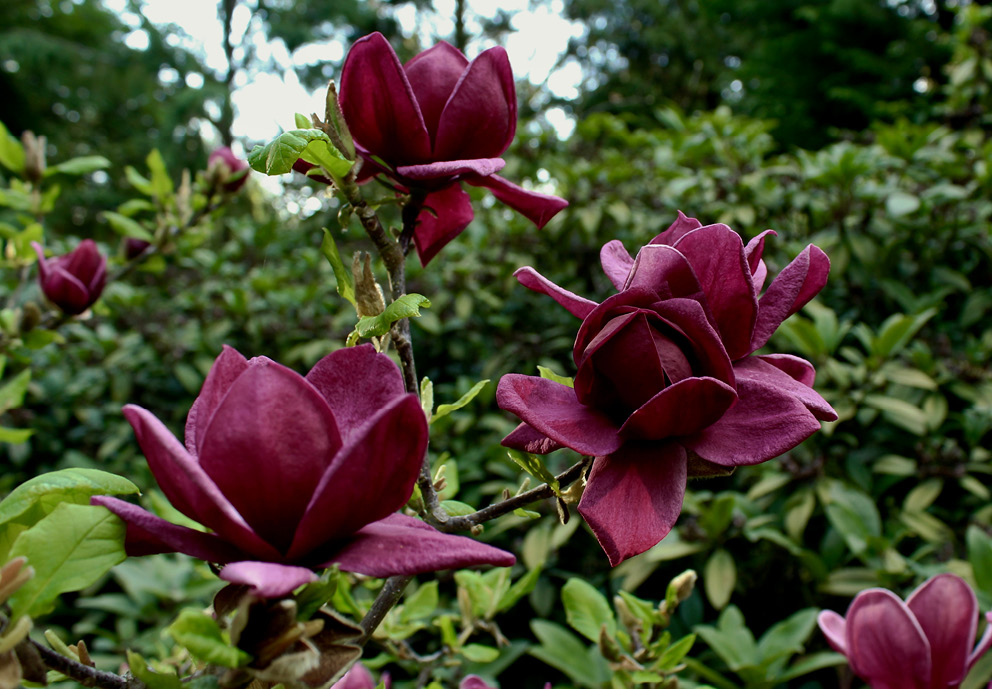
Popular Varieties
Some popular magnolia varieties include Magnolia Stellata (Star Magnolia). If your garden is smaller, then this is a great variety to pick. This is a very compact plant with bright white star shaped flowers blooming in March and April. It grows quite slowly which can be useful if space is at a premium.
Another fantastic option for larger spaces and gardens is Magnolia Grandiflora. This is an evergreen variety most often grown as a tree. They are slow growing compared to other magnolias but can tolerate a wider range of soil types, even alkaline soils when all other magnolias prefer a more acidic soil. Grandifloras look great with their imposing size when mature and huge white flowers nearly a ruler length across. The leaves are leathery and glossy on top with a reddish-brown tinge underneath.
Other great choices for the garden are:
- Magnolia x soulangeana (grown as a tree)
- Magnolia ‘Susan’ (grown as a shrub)
- Magnolia ‘Leonard Messel’ (grown as a large shrub or small tree)
- Magnolia ‘Heaven Scent’ (grown as a small tree)
- Magnolia ‘Elizabeth’ (grown as a small tree)
- Magnolia ‘Fairy White’ (compact bushy shrub)
Each of these varieties has its own unique characteristics and can add a special touch to your garden.
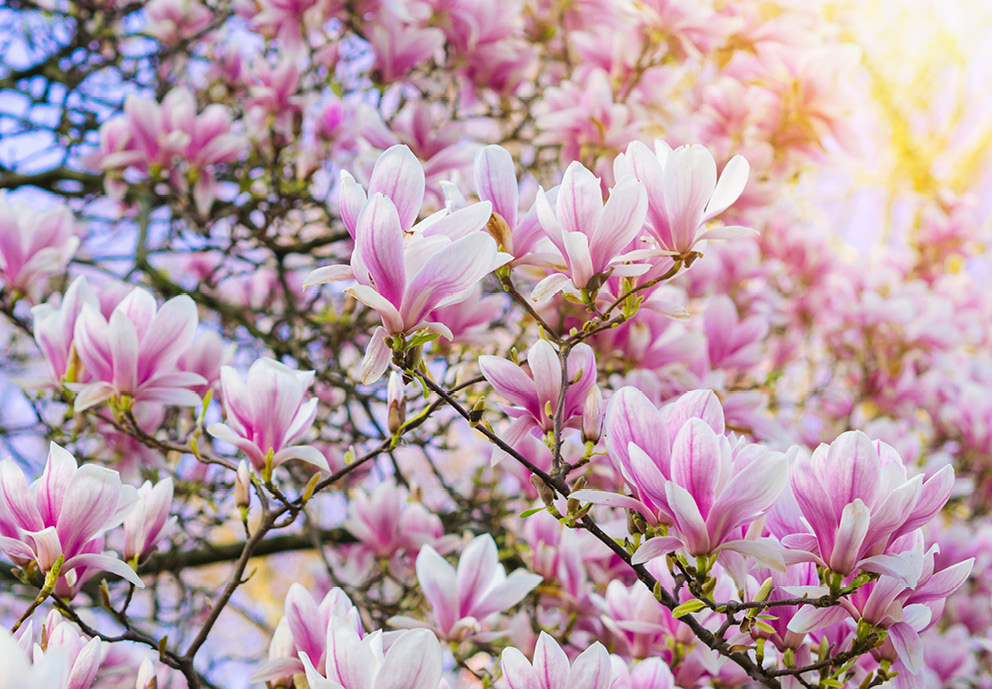
How to Grow Magnolias in the Garden
If you’re looking to add a magnolia to your garden, then this section will help steer you to success and wonderful early blooms for years to come.
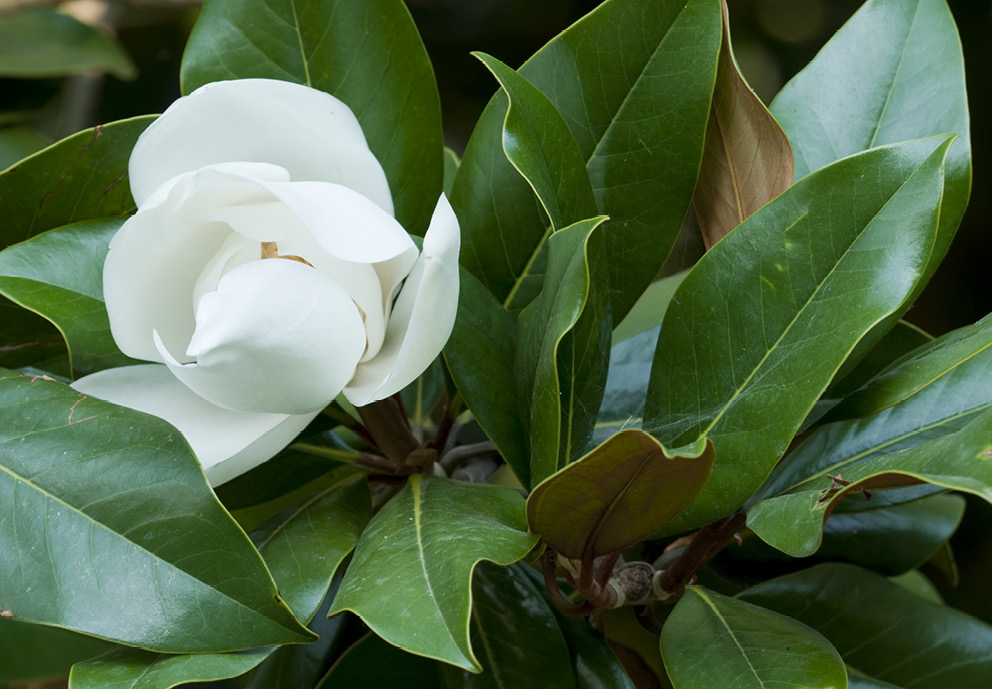
Soil Requirements
Magnolias prefer acidic, well-draining soil. They do best in loamy soil that is rich in organic matter. If your soil is too heavy or compacted, it’s a good idea to amend it with some ericaceous compost before planting your magnolia shrub. There are many other ways to introduce acidity to compost or soil over time with organic matter like well-rotted manure, wood chips, leaf mould and pine needles. Watch out for yellowing leaves as this means it isn’t getting the nutrients it needs so a treatment with a liquid acidic plant fertiliser to give it a boost of needed nutrients will help. Using a liquid fertiliser a few times a year will help keep it healthy anyway so worth having.
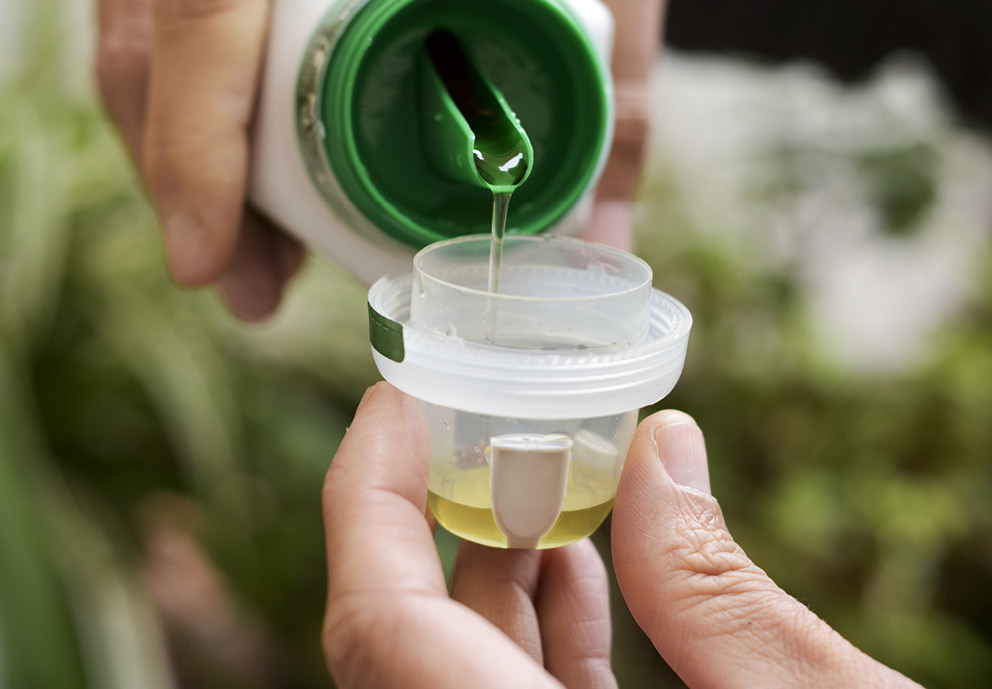
Where to Plant
The best place to plant a magnolia in the garden is somewhere that receives full sun, but in a sheltered spot away from strong cold winds. As above, plant in a spot that is well draining as they don’t like to be waterlogged and can die from being overwatered. Additionally, Magnolias come in various sizes, ranging from small shrubs to tall trees. Before choosing a spot for your magnolia, consider how large it will grow and make sure you have enough space for it to thrive. Most varieties need at least 10 feet of clearance around them to reach their full size.
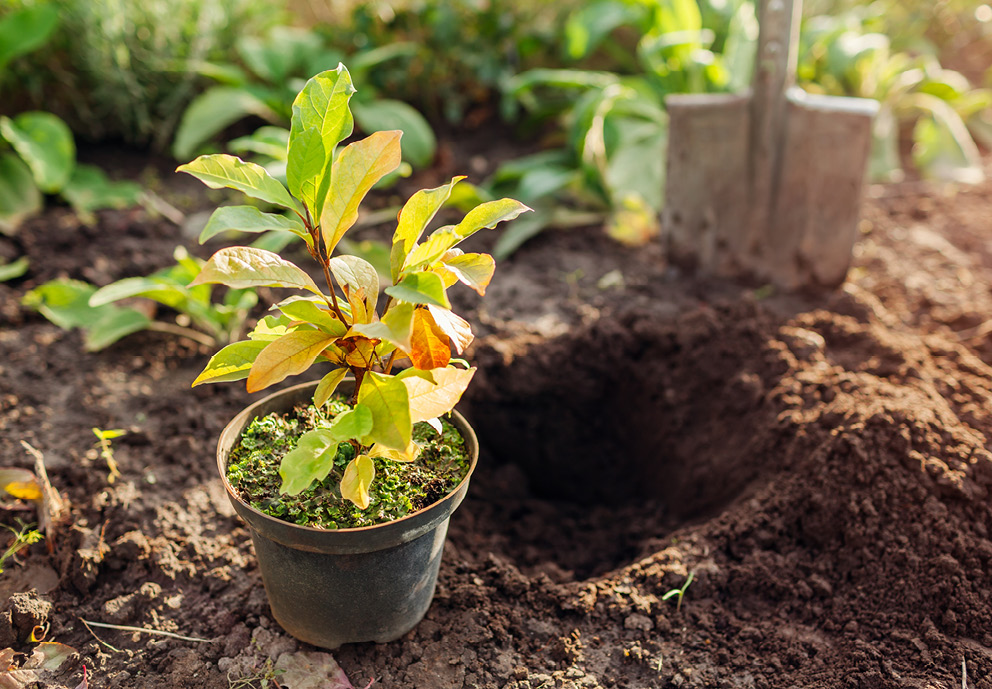
How to Plant in the Ground
Dig a hole that is twice as wide and just as deep as the root ball of your magnolia. Mix a lot of ericaceous compost in with this freshly dug out soil. Don’t worry, you can’t be too generous here. Next, gently loosen the roots of the magnolia before planting and make sure to position it at the same depth as it was in its nursery container. Fill in the hole with your new soil and compost mix, and water thoroughly. We also advise getting some organic matter and spreading it as a mulch around the soil near the now in-filled roots and stem. This will offer protection of the shallow roots, but will also break down over time, giving the magnolia the nutrients it needs and simultaneously keeping the soil acidic. Just what it loves!
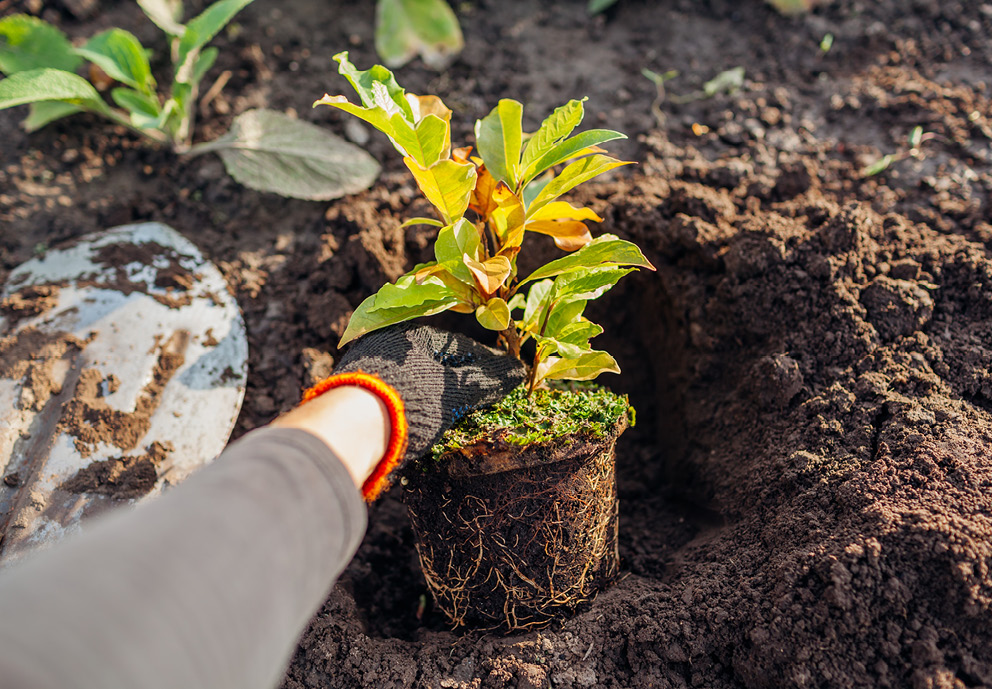
How to Plant in Pots and Containers
For those without a large garden or with no suitable spots in the ground, container growing a dwarf variety magnolia is another great option. We advise a large pot that’s at a minimum double the size of the original nursery pot, however a bit larger is better. Ensure the pot is filled with a good mix of ericaceous compost and potting grit to allow the soil to freely drain. As above, mulch around the base with organic matter. Give it a good water and keep it in full sun and away from strong winds. The great thing about pot grown plants is that they can be moved to suitable locations when the seasons change – though mature magnolia shrubs might take two to move safely!
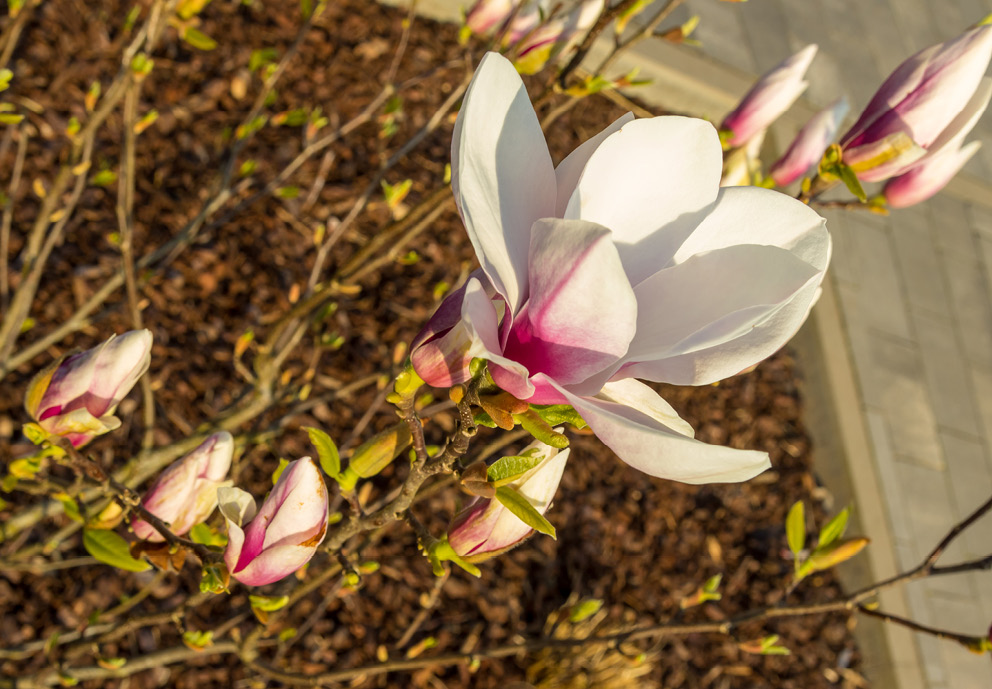
When to Plant
We think the best time to plant is in autumn, when the ground is still warm from the summer sun, but there’s more moisture from the autumn rains. Planting in autumn is preferred instead of spring and summer also because at these times the plant is coping with being transplanted, and trying to grow, which can cause a bit of shock and other problems. Also, its roots would not be as developed to cope during periods of drought.
If you can’t wait until autumn or have missed the boat, then aim to plant as early as possible in the spring following the last frosts.
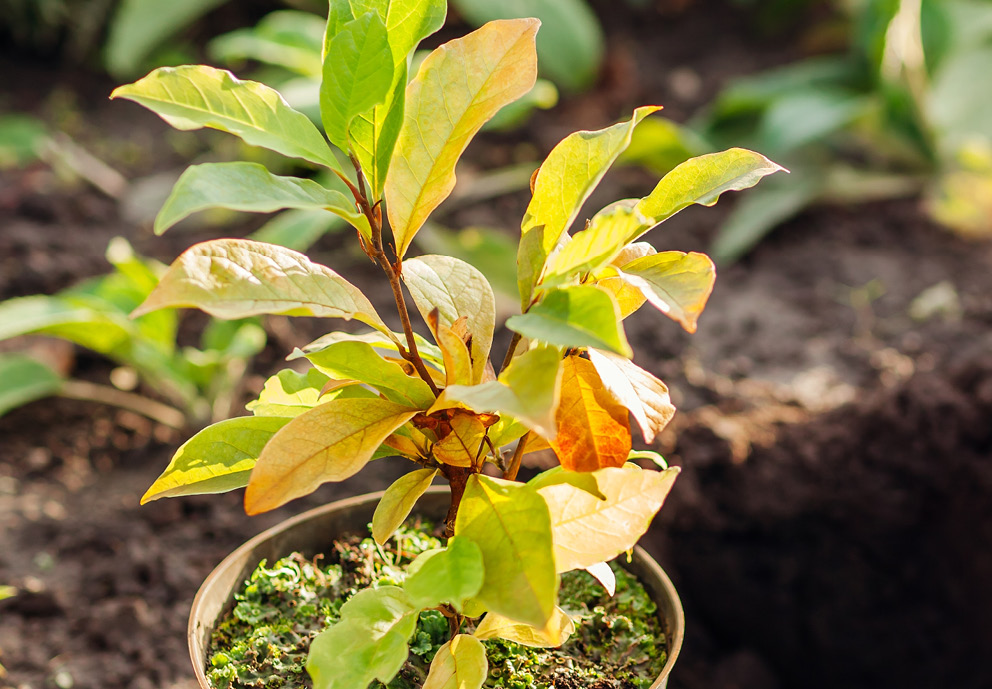
Watering and Feeding
When it comes to watering, magnolias are relatively low-maintenance trees. They prefer moist soil, but be careful not to overwater them, as this can lead to root rot. A layer of mulch around the base of the tree can help retain moisture and regulate soil temperature. Fertilising in early spring and a couple of other times through the spring and summer will provide your magnolia with the nutrients it needs to grow well and give you amazing blooms. Whether in the ground or in pots we always advise mulching magnolias in early spring with ericaceous compost and plenty of organic matter.
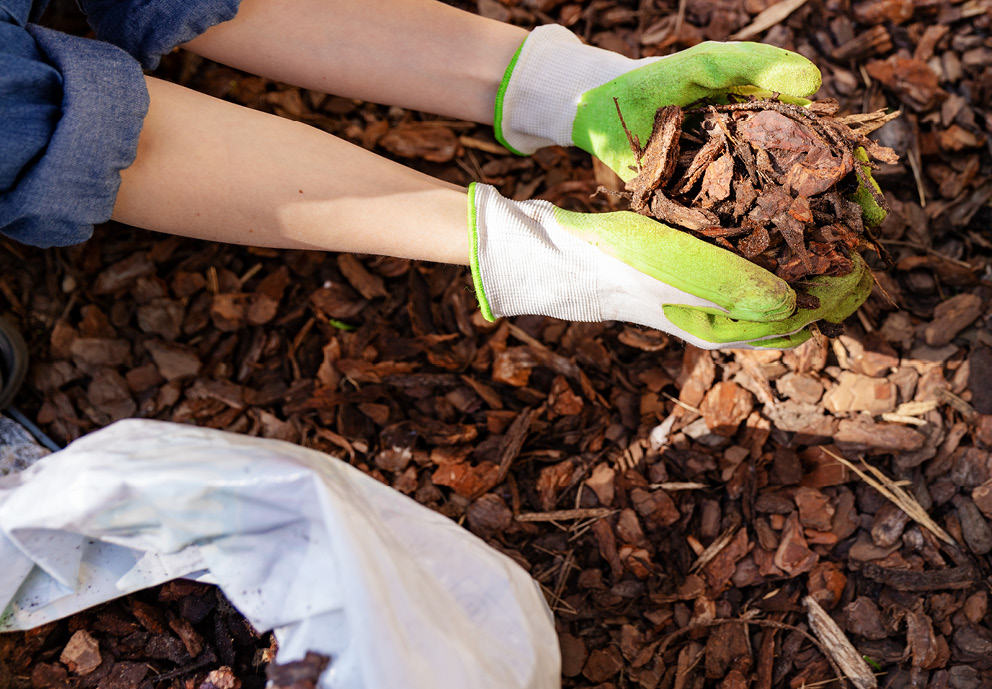
Ongoing Care and Pruning
Once established, magnolias require minimal care. However, regular pruning is recommended to maintain their shape and promote healthy growth. The best time to prune any magnolia is immediately after flowering, as this is when the tree is actively growing. Remove any dead or damaged branches and thin out crowded areas to allow for better air circulation.
Late frosts can be a problem in some areas damaging the flowers before they fully emerge. Planting in a cooler place sheltered from the strongest sun helps delay flowering and keeps blooms in the best condition.

Perfect Companion Plants for Magnolias
Mature magnolias look great on their own but if you want a fuller effect from a border then there are many companion plants to choose from. When it comes to selecting companion plants for magnolias, consider their similar requirements – light, soil, and water – as well as aesthetics. Underplantings of spring-flowering bulbs such as daffodils, crocuses, and snowdrops can provide a stunning contrast to the magnolia’s early blooms. Rhododendrons and azaleas, with their vibrant colours and similar acidic soil preferences, look fantastic alongside magnolias and share the same flowering period. Ferns and hostas, which thrive in the dappled shade provided by mature magnolia trees, can create a lush, woodland feel. Finally, planting low-growing groundcovers like periwinkle underneath your magnolia can add an additional layer of interest to your garden and help to control weeds. The key is to create a harmonious landscape that showcases the magnolia as the star of the show, while still offering visual interest throughout the year.
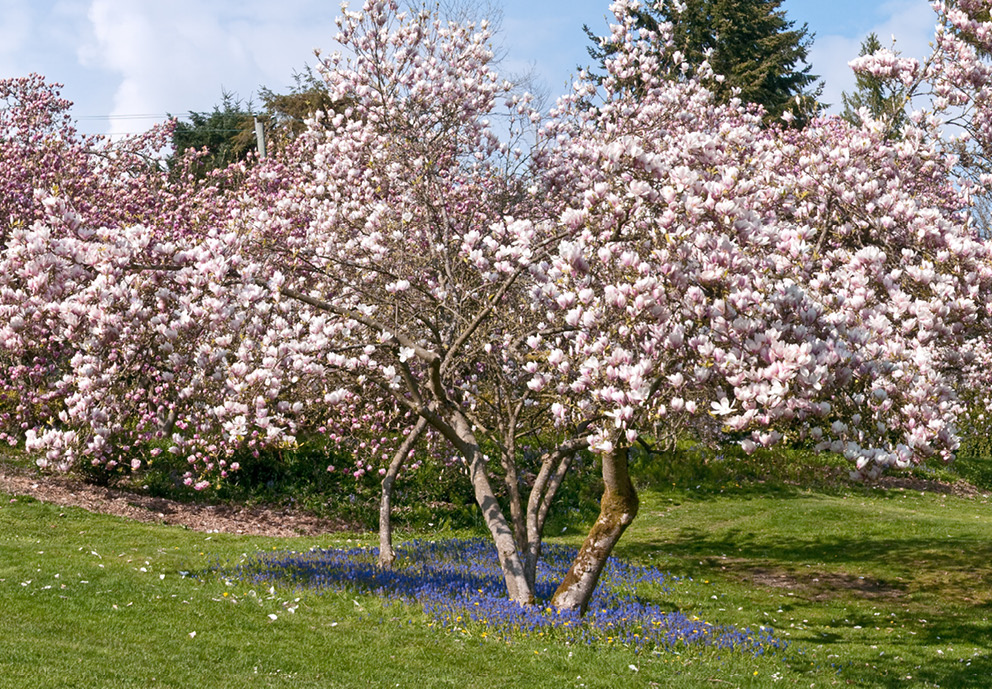
Add a Stunning Magnolia to Your Garden
Magnolias are stunning shrubs that can bring beauty and fragrance to any garden. With the right care and maintenance, they can thrive and provide years of enjoyment. Whether you choose a deciduous or evergreen variety, be sure to give your magnolia plenty of room to grow and watch as it adds a touch of elegance to your outdoor space. A well grown Magnolia is a sight to behold, becoming more impressive with maturity. So, don’t wait any longer – go out and plant a beautiful magnolia in your garden today!
